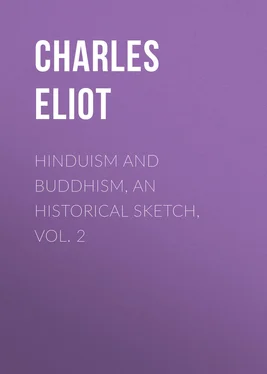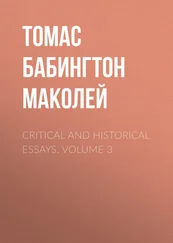Charles Eliot - Hinduism and Buddhism, An Historical Sketch, Vol. 2
Здесь есть возможность читать онлайн «Charles Eliot - Hinduism and Buddhism, An Historical Sketch, Vol. 2» — ознакомительный отрывок электронной книги совершенно бесплатно, а после прочтения отрывка купить полную версию. В некоторых случаях можно слушать аудио, скачать через торрент в формате fb2 и присутствует краткое содержание. Жанр: foreign_religion, Философия, Религиозная литература, foreign_psychology, foreign_antique, foreign_prose, на английском языке. Описание произведения, (предисловие) а так же отзывы посетителей доступны на портале библиотеки ЛибКат.
- Название:Hinduism and Buddhism, An Historical Sketch, Vol. 2
- Автор:
- Жанр:
- Год:неизвестен
- ISBN:нет данных
- Рейтинг книги:4 / 5. Голосов: 1
-
Избранное:Добавить в избранное
- Отзывы:
-
Ваша оценка:
- 80
- 1
- 2
- 3
- 4
- 5
Hinduism and Buddhism, An Historical Sketch, Vol. 2: краткое содержание, описание и аннотация
Предлагаем к чтению аннотацию, описание, краткое содержание или предисловие (зависит от того, что написал сам автор книги «Hinduism and Buddhism, An Historical Sketch, Vol. 2»). Если вы не нашли необходимую информацию о книге — напишите в комментариях, мы постараемся отыскать её.
Hinduism and Buddhism, An Historical Sketch, Vol. 2 — читать онлайн ознакомительный отрывок
Ниже представлен текст книги, разбитый по страницам. Система сохранения места последней прочитанной страницы, позволяет с удобством читать онлайн бесплатно книгу «Hinduism and Buddhism, An Historical Sketch, Vol. 2», без необходимости каждый раз заново искать на чём Вы остановились. Поставьте закладку, и сможете в любой момент перейти на страницу, на которой закончили чтение.
Интервал:
Закладка:
Besides the nine Dharmas, numerous other sûtras exist in Sanskrit, Chinese, Tibetan and the languages of Central Asia. Few have been edited or translated and even when something is known of their character detailed information as to their contents is usually wanting. Among the better known are the following.
10. One of the sûtras most read in China and admired because its style has a literary quality unusual in Buddhist works is commonly known as the Lêng-yen-ching. The full title is Shou-lêng-yen-san-mei-ching which is the Chinese transliteration of Śûrangama Samâdhi. 143 143 Translated in part by Beal, Catena of Buddhist Scriptures , pp. 286-369. See also Teitaro Suzuki, Outlines of Mahâyâna , p. 157. For notices of the text see Nanjio, Nos. 399, 446, 1588. Fa-Hsien, chap. XXIX. For the equivalence of Shou-lêng-yen and Śûrangama see Nanjio's note to No. 399 and Julien, Méthode , 1007 and Vasilief, p. 175.
This sutra is quoted by name in the Śikshâsamuccaya and fragments of the Sanskrit text have been found in Turkestan. 144 144 See Śikshâs, ed. Bendall, pp. 8,91 and Hoernle, Manuscript remains , I. pp. 125 ff.
The Śûrangama-Samâdhi Sûtra has been conjectured to be the same as the Samâdhirâja, but the accounts of Rajendralala Mitra and Beal do not support this theory. Beal's translation leaves the impression that it resembles a Pali sutta. The scene is laid in the Jetavana with few miraculous accessories. The Buddha discusses with Ânanda the location of the soul and after confuting his theories expounds the doctrine of the Dharma-kâya. The fragments found in Turkestan recommend a particular form of meditation.
11. Târanâtha informs us that among the many Mahayanist works which appeared in the reign of Kanishka's son was the Ratnakûṭa-dharma-paryâya in 1000 sections and the Ratnakûṭa is cited not only by the Śikshâsamuccaya but by Asanga. 145 145 Mahâyâna-sûtrâlankâra, XIX. 29.
The Tibetan and Chinese canons contain sections with this name comprising forty-eight or forty-nine items among which are the three important treatises about Amitâbha's paradise and many dialogues called Paripṛicchâ, that is, questions put by some personage, human or superhuman, and furnished with appropriate replies. 146 146 E.g. the Râshtra-pâla-paripṛicchâ edited in Sanskrit by Finot, Biblioth. Buddhica , 1901. The Sanskrit text seems to agree with the Chinese version. The real number of sûtras in the Ratnakûṭa seems to be 48, two being practically the same but represented as uttered on different occasions.
The Chinese Ratnakûṭa is said to have been compiled by Bodhiruchi (693-713 A.D.) but of course he is responsible only for the selection not for the composition of the works included. Section 14 of this Ratnakûṭa is said to be identical with chapters 11 and 12 of the Mûlasarvâstivâdin Vinaya. 147 147 There is another somewhat similar collection of sûtras in the Chinese Canon called Ta Tsi or Mahâsannipâta but unlike the Ratnakûṭa it seems to contain few well-known or popular works.
12. The Guṇa-kâraṇḍa-vyûha and Kâraṇḍa-vyûha are said to be two recensions of the same work, the first in verse the second in prose. Both are devoted to the praise of Avalokita who is represented as the presiding deity of the universe. He has refused to enter Buddhahood himself until all living creatures attain to true knowledge and is specially occupied in procuring the release of those who suffer in hell. The Guṇa-kâraṇḍa-vyûha contains a remarkable account of the origin of the world which is said to be absent from the prose version. The primeval Buddha spirit, Âdi-Buddha or Svayambhû, produces Avalokita by meditation, and Avalokita produces the material world and the gods of Hinduism from his body, Śiva from his forehead, Nârâyaṇa from his heart and so on. As such doctrines are not known to have appeared in Indian Buddhism before the tenth century it seems probable that the versified edition is late. But a work with the title Ratna-kâraṇḍaka-vyûha-sûtra was translated into Chinese in 270 and the Kâraṇḍa-vyûha is said to have been the first work translated into Tibetan. 148 148 I know of these works only by Raj. Mitra's abstracts, Nepal. Bud. Lit. pp. 95 and 101. The prose text is said to have been published in Sanskrit at Calcutta, 1873.
13. The Karuṇâa-puṇḍarîka 149 149 Raj. Mitra, Nepalese Buddhist Lit . pp. 285 ff. The Sanskrit text was published for the Buddhist Text Society, Calcutta, 1898.
or Lotus of Compassion is mainly occupied with the description of an imaginary continent called Padmadhâtu, its Buddha and its many splendours. It exists in Sanskrit and was translated into Chinese about 400 A.D. (Nanjio, No. 142).
14. The Mahâvairocanâbhisambhodhi called in Chinese Ta-jih-ching or Great Sun sutra should perhaps be mentioned as it is the principal scripture of the Chên-yen (Japanese Shingon) school. It is a late work of unknown origin. It was translated into Chinese in 724 A.D. but the Sanskrit text has not been found.
There are a great number of other sutras which are important for the history of literature, although little attention is paid to them by Buddhists at the present day. Such are the Mahayanist version of the Mahâparinirvâṇa recounting the death and burial of the Buddha and the Mahâsannipâta-sûtra, which apparently includes the Sûryagarbha and Candragarbha sutras. All these works were translated into Chinese about 420 A.D. and must therefore be of respectable antiquity.
Besides the sutras, there are many compositions styled Avadânas or pious legends. 150 150 Avadâna is primarily a great and glorious act: hence an account of such an act.
These, though recognized by Mahayanists, do not as a rule contain expositions of the Sûnyatâ and Dharma-kâya and are not sharply distinguished from the more imaginative of the Hinayanist scriptures. 151 151 The Avadâna-śataka (Feer, Annales du Musée Guimet , XVIII) seems to be entirely Hinayanist.
But they introduce a multiplicity of Buddhas and Bodhisattvas and represent Sâkyamuni as a superhuman worker of miracles.
They correspond in many respects to the Pali Vinaya but teach right conduct not so much by precept as by edifying stories and, like most Mahayanist works they lay less stress upon monastic discipline than on unselfish virtue exercised throughout successive existences. There are a dozen or more collections of Avadânas of which the most important are the Mahâvastu and the Divyâvadâna. The former 152 152 Edited by Senart, 3 vols. 1882-1897. Windisch, Die Komposition des Mahâvastu , 1909. Article "Mahavâstu" in E.R.E.
is an encyclopædic work which contains inter alia a life of Sâkyamuni. It describes itself as belonging to the Lokottaravâdins, a section of the Âryamahâ-sanghikas. The Lokottaravâdins were an ancient sect, precursors of the Mahayana rather than a branch of it, and much of the Mahâvastu is parallel to the Pali Canon and may have been composed a century or two before our era. But other parts seem to belong to the Gandharan period and the mention of Chinese and Hunnish writing points to a much later date. 153 153 So too do the words Horâpâthaka (astrologer), Ujjhebhaka (? Uzbek), Peliyaksha (? Felix). The word Yogâcâra (I. 120) may refer simply to the practice of Yoga and not to the school which bore this name.
If it was originally a Vinaya treatise, it has been distended out of all recognition by the addition of legends and anecdotes but it still retains a certain amount of matter found also in the Pali and Tibetan Vinayas. There were probably several recensions in which successive additions were made to the original nucleus. One interpolation is the lengthy and important section called Daśabhûmika, describing the career of a Bodhisattva. It is the only part of the Mahâvastu which can be called definitely Mahayanist. The rest of the work marks a transitional stage in doctrine, just as its language is neither Prakrit or Sanskrit but some ancient vernacular brought into partial conformity with Sanskrit grammar. No Chinese translation is known.
Интервал:
Закладка:
Похожие книги на «Hinduism and Buddhism, An Historical Sketch, Vol. 2»
Представляем Вашему вниманию похожие книги на «Hinduism and Buddhism, An Historical Sketch, Vol. 2» списком для выбора. Мы отобрали схожую по названию и смыслу литературу в надежде предоставить читателям больше вариантов отыскать новые, интересные, ещё непрочитанные произведения.
Обсуждение, отзывы о книге «Hinduism and Buddhism, An Historical Sketch, Vol. 2» и просто собственные мнения читателей. Оставьте ваши комментарии, напишите, что Вы думаете о произведении, его смысле или главных героях. Укажите что конкретно понравилось, а что нет, и почему Вы так считаете.












